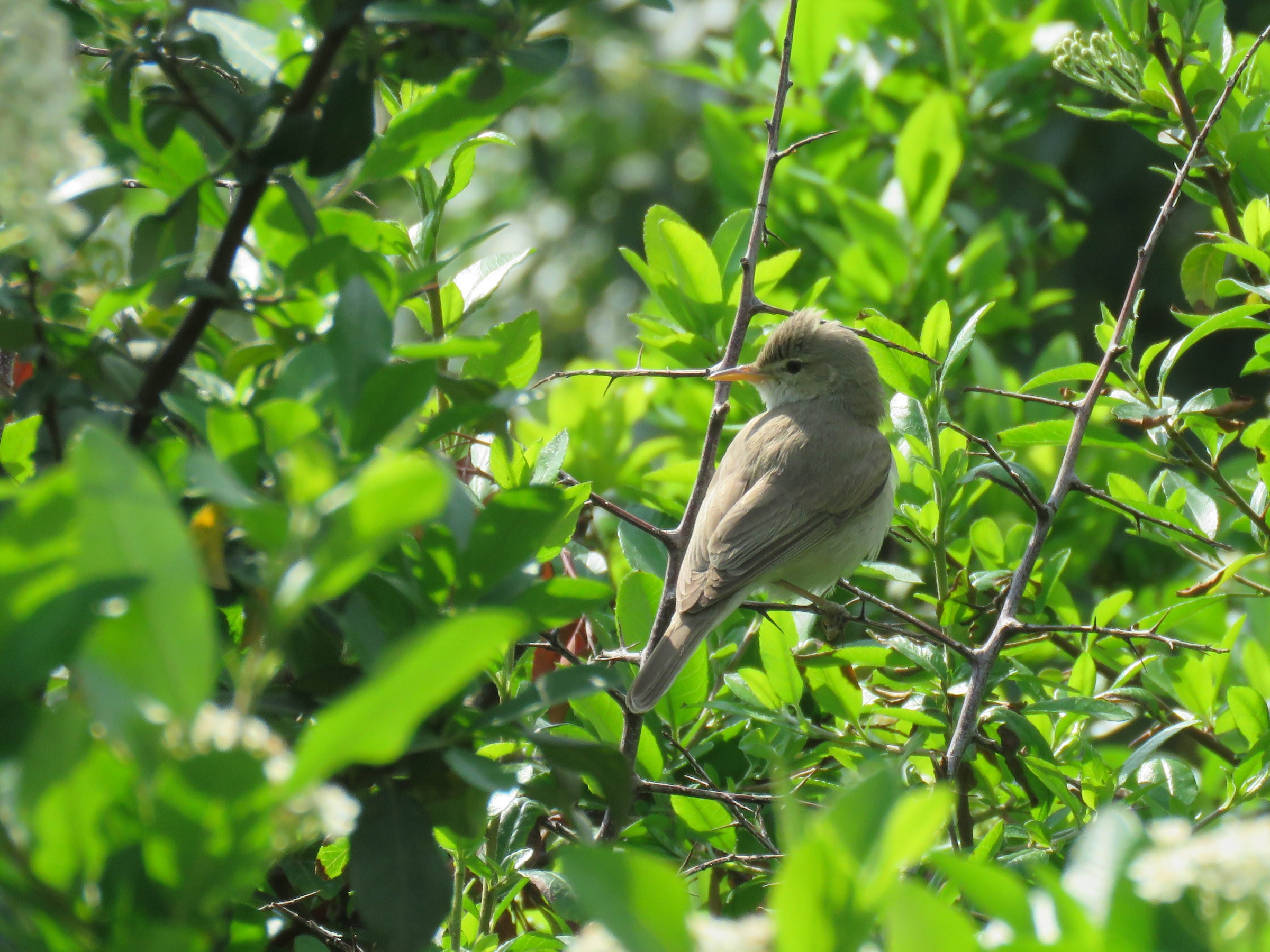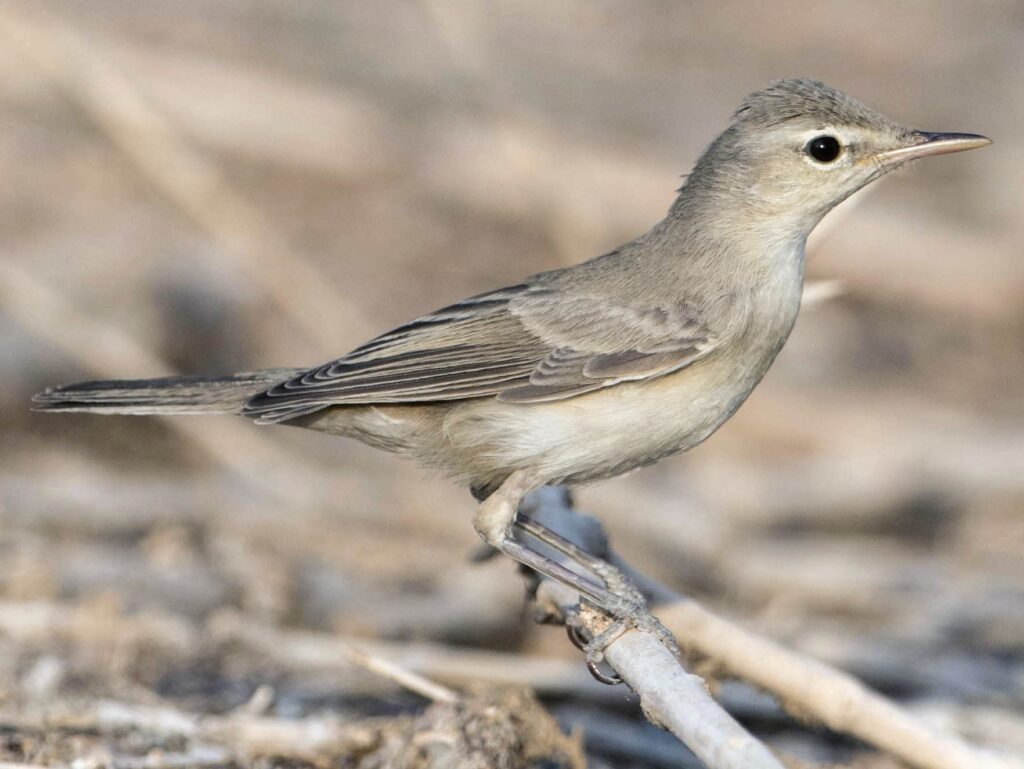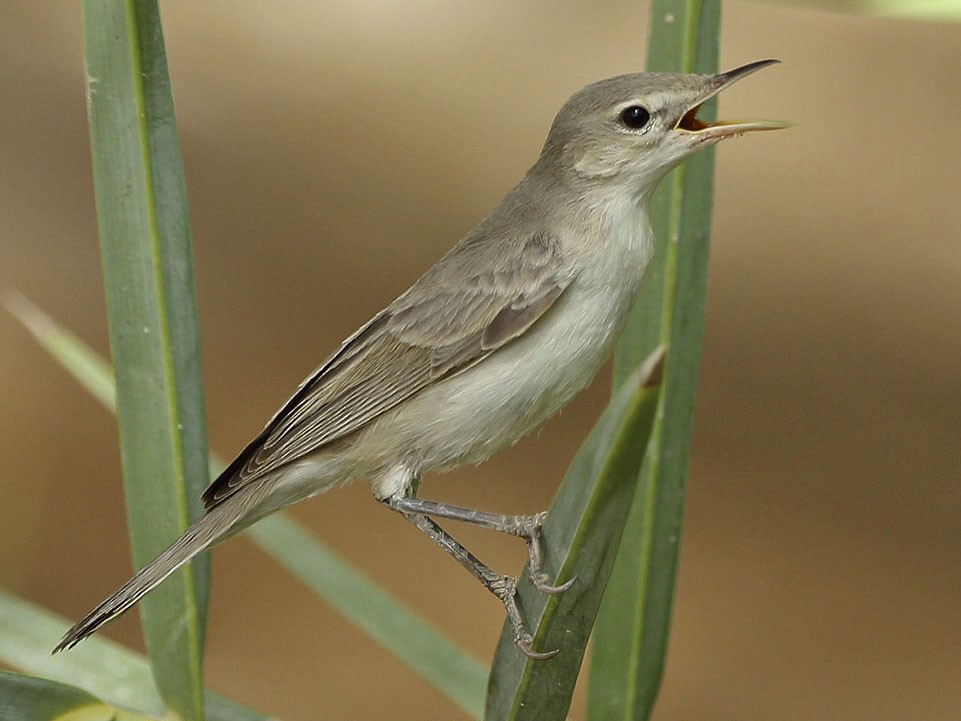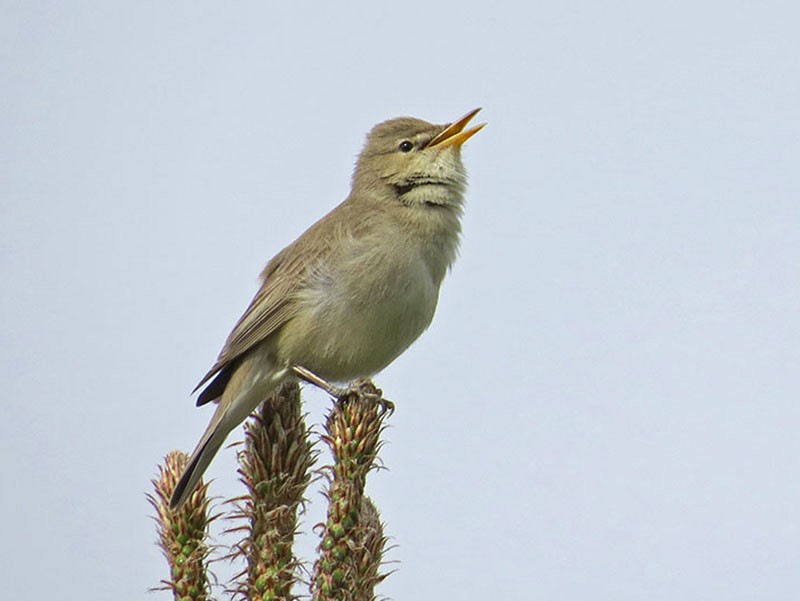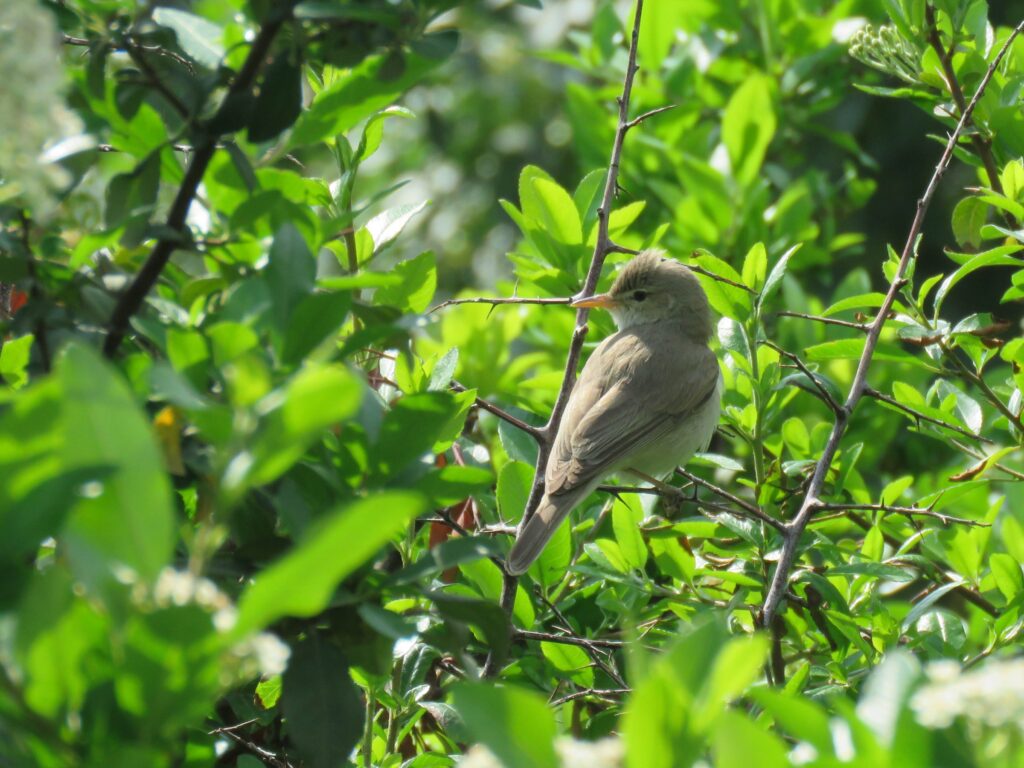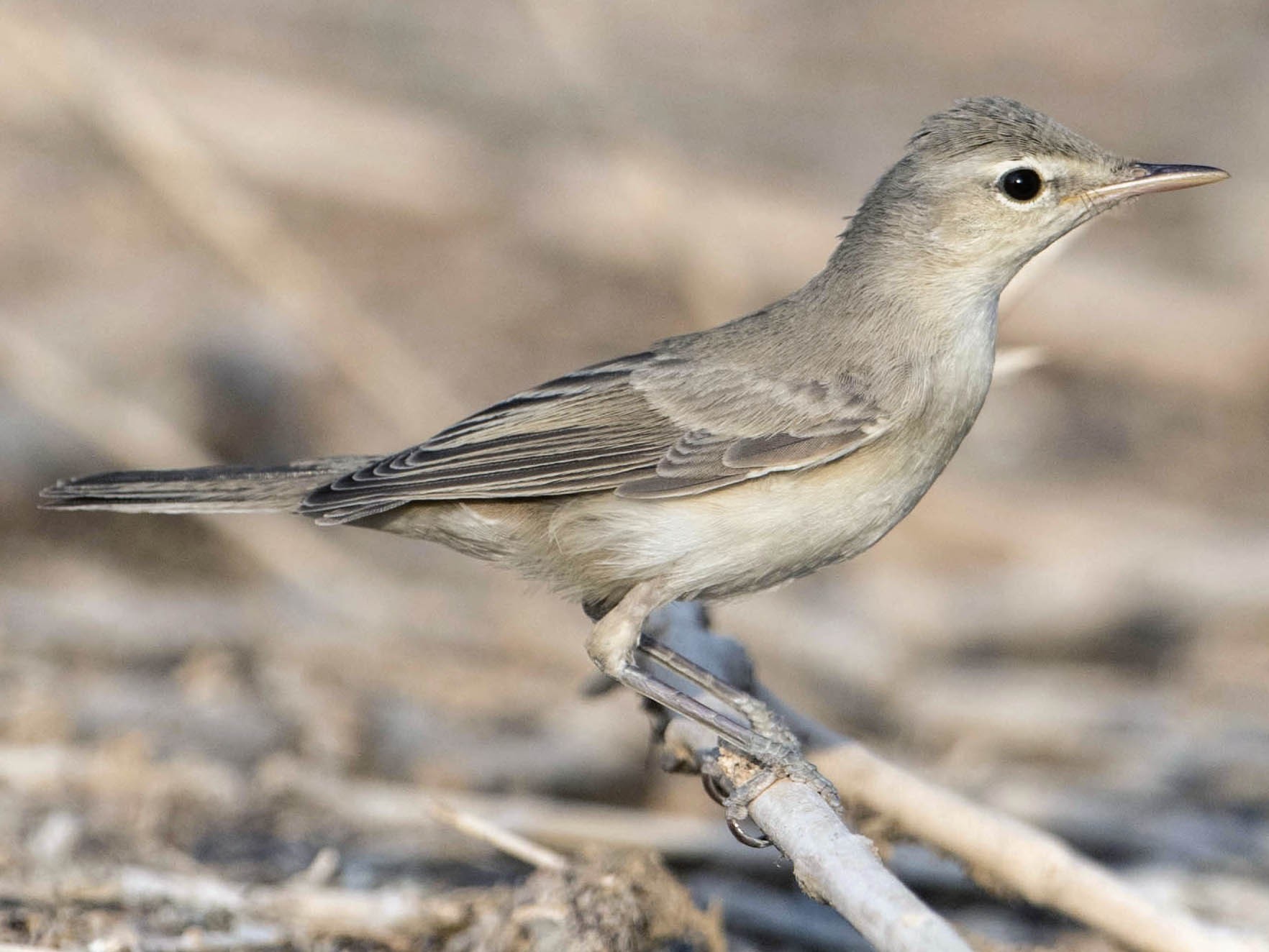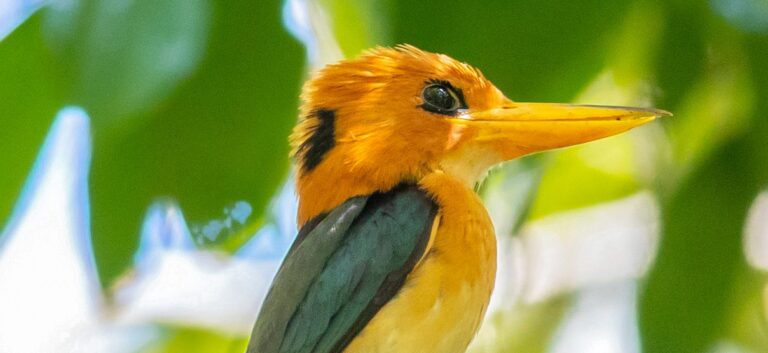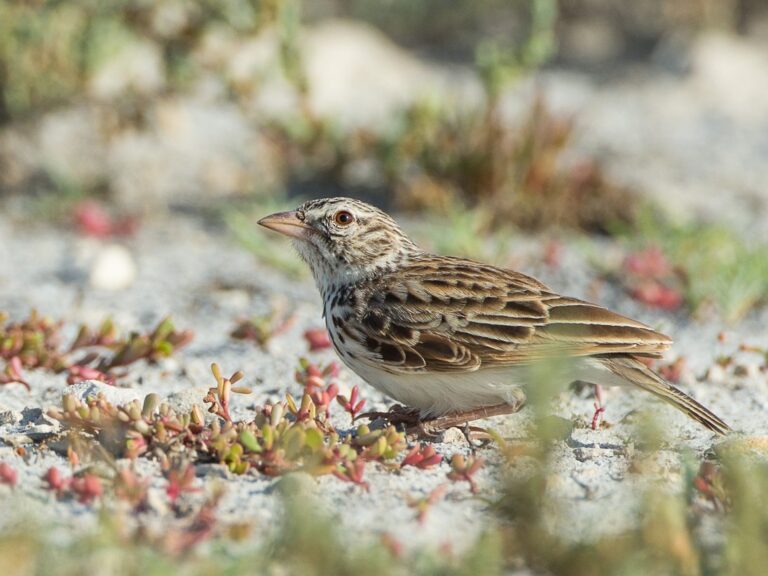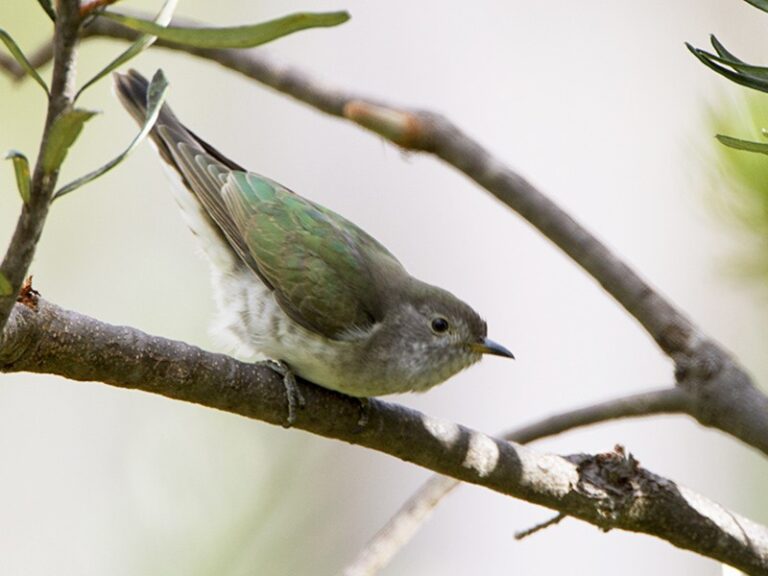Eastern Olivaceous Warbler: A Marvel of Migration and Song
The Eastern Olivaceous Warbler, known scientifically as Hippolais pallida, is a small songbird that captivates birdwatchers and nature lovers alike. This bird is notable for its melodic vocalizations, which echo through its preferred habitats in Europe and parts of Asia. Its delicate songs can often be heard during the breeding season, attracting both mates and the attention of keen observers.
With its slender form, the Eastern Olivaceous Warbler exhibits a range of beautiful features, including a subtle olive-colored plumage that blends well into its surroundings. This species thrives in various environments, primarily favoring dense shrubs and low vegetation near water sources. Understanding its behavior and habitat is crucial for anyone looking to spot this elusive bird in the wild.
Birders often seek out the Eastern Olivaceous Warbler for its intriguing nature and significant ecological role. By learning more about its classification, vocal patterns, and preferred habitats, enthusiasts can enhance their birdwatching experience and appreciate the complexity of avian life.
Key Takeaways
- The Eastern Olivaceous Warbler is recognized for its beautiful songs and unique appearance.
- It prefers dense habitats near water, making it an interesting subject for bird watchers.
- Understanding its behavior can enrich the birding experience for enthusiasts.
Classification and Taxonomy
The Eastern Olivaceous Warbler is classified as Hippolais pallida. This species is often grouped under the Acrocephalidae family, commonly known as warblers.
Birdwatchers may find it helpful to know that Hippolais pallida has several subspecies. These subspecies vary primarily based on geographical distribution and vocal characteristics.
- Subspecies:
- Hippolais pallida pallida: Predominantly found in eastern Europe.
- Hippolais pallida fuscus: Found in the Middle East and parts of Africa.
Taxonomic classification becomes tricky due to similarities with other species in the Iduna genus. Some taxonomists argue about which characteristics should define these groupings, often leading to different classifications.
The Eastern Olivaceous Warbler is known for its distinct vocalizations. Its song is a series of melodious and somewhat repetitive phrases, often characterized by a rhythmic quality. The bird uses its calls for communication during mating and territory establishment.
Understanding the taxonomy and vocal behavior of the Eastern Olivaceous Warbler aids ornithologists and bird enthusiasts in identifying and studying this species across its range. For more detailed information, further reading on warbler relationships can be helpful.
Physical Description
The Eastern Olivaceous Warbler is a medium-sized bird known for its distinct coloration and features. Its plumage is well-adapted for blending into its surroundings, making it a fascinating subject for birdwatchers.
Adult Plumage
The adult Eastern Olivaceous Warbler sports a pale brown back that provides excellent camouflage in its natural habitat. Its underparts are whitish, contrasting slightly with the upper body. This color pattern helps the bird remain hidden from predators while foraging.
The bird has a flat forehead, which gives it a unique profile among warblers. They exhibit a subtle, graceful downward tail flick while moving, which is characteristic of this species. This behavior not only aids in balance but also enhances its maneuverability through dense foliage.
Distinctive Features
In addition to its plumage, the Eastern Olivaceous Warbler has several distinctive traits. Its body length typically ranges from 12 to 13 centimeters. The bird’s bill is slender and pointed, suitable for catching insects, which make up a significant part of its diet.
The warbler’s vocalizations are another important aspect of its identity. They are known for their melodious and varied calls, often heard during the breeding season. These songs are integral for attracting mates and establishing territory. Birdwatchers can easily recognize them by their unique sounds, often described as a series of sweet notes that resonate in their natural environment.
For more detailed birding information, you can explore resources like Aspects of breeding ecology of the eastern olivaceous warbler or Differentiation and phylogeny of the olivaceous warbler.
Habitat and Distribution
The Eastern Olivaceous Warbler is known for its distinctive habitat preferences and a varied geographic range. It thrives in different environments across Europe, Africa, and parts of the Middle East, making it a versatile species.
Geographic Range
The range of the Eastern Olivaceous Warbler extends from Greece to Morocco and across to parts of the Middle East. It is also found in regions such as Kenya and Tanzania. This bird migrates seasonally, often traveling between breeding and wintering grounds.
In Europe, the warbler prefers the Mediterranean region but can also be found in eastern areas during the breeding season. Its distribution is somewhat similar to the Western Olivaceous Warbler, although both species inhabit different locales and environments.
Preferred Habitats
Eastern Olivaceous Warblers favor habitats that provide ample cover, such as bushes, brambles, and hawthorn. They are commonly found near reed beds, where they can easily hide from predators and hunt for insects.
These birds appreciate dense vegetation that offers protection and nesting sites. Their preference for more open areas with some brush nearby helps them balance safety and access to food. The lush environments support their foraging behaviors, allowing them to thrive in rich insect habitats, which is crucial during the breeding season.
Additionally, their vocalizations are distinctive, comprising a series of melodious notes that can often be heard during mating rituals. These calls help establish their territory and communicate with potential mates.
Behavior and Ecology
The Eastern Olivaceous Warbler exhibits distinct behaviors and ecological traits that are essential for its survival and reproduction. This section explores their breeding behaviors, foraging habits, and migration patterns.
Breeding Behaviors
Eastern Olivaceous Warblers typically breed in dense undergrowth and shrubby environments. They construct their nests low to the ground, often hidden among vegetation for protection. A typical nest is built with grass and plant materials, providing a safe space for their young.
The female usually lays 3 to 6 eggs, which are pale with darker speckles. Incubation lasts about two weeks, primarily managed by the female. After hatching, both parents care for the chicks by bringing them insects and other food. The parents are known for their vocalizations, especially during the breeding season, as they communicate and establish territory.
Foraging and Diet
The diet of the Eastern Olivaceous Warbler mainly consists of insects, such as beetles, caterpillars, and ants. They prefer to forage in dense foliage, where they can easily find food while remaining hidden from predators.
Their foraging technique often includes gleaning, where they pick insects off leaves or branches. During foraging, they are known to sing softly, which not only helps in communication but may also attract mates. This behavior is crucial in maintaining their nutritional needs, especially while feeding nestlings.
Migration Patterns
Eastern Olivaceous Warblers are migratory birds, typically breeding in Southeast Europe and migrating to Africa for the winter. Their migration routes vary, with some populations traveling long distances across the Mediterranean.
These warblers usually depart their breeding grounds in late summer and return in spring. They prefer to migrate at night, which helps them avoid predators and conserve energy. The species’ adaptability in migratory behavior allows them to respond to environmental changes effectively, ensuring their survival across different habitats.
Observation and Birding
Birdwatching enthusiasts seek out the Eastern Olivaceous Warbler for its distinct characteristics and vocalizations. This bird can be spotted in various key locations, offering unique opportunities for observation.
Identifying Characteristics
The Eastern Olivaceous Warbler is a small, slender bird with a length of about 12-13 centimeters. It exhibits subtle olive-brown plumage on its upperparts, contrasting with a paler underbelly. Notably, its long, pointed wings and tail add to its streamlined appearance.
A key feature to identify this warbler is its song, which is a series of clear, melodic notes that resemble the call of the Blackcap or Chiffchaff. During the breeding season, males sing frequently, making it easier to locate them. Observers should listen for these distinctive vocalizations, which help distinguish it from similar species like Sykes’s Warbler.
Birding Locations
Eastern Olivaceous Warblers have been observed in various regions. Notable birding hotspots include Farlington Marsh in Hampshire and Portland Bill in Dorset. These areas attract many birdwatchers due to their diverse habitats.
In migration, these warblers can also be found on the Isles of Scilly and Shetland, where they may be spotted in shrubbery or along coastal areas. Additionally, Cyprus serves as an important stopover point for these birds during migration.
Birders often use platforms like Rare Bird Alert to stay updated on sightings. This information can lead to successful trips to observe the warblers in various locations, enhancing the birding experience.
Frequently Asked Questions
The Eastern Olivaceous Warbler is a fascinating bird species with various unique traits. Understanding its habitat, migration patterns, vocalizations, diet, and conservation status can enhance appreciation for this avian species.
What is the typical habitat of the Eastern Olivaceous Warbler?
The Eastern Olivaceous Warbler typically prefers dense shrubby areas, especially near water sources. They can be found in gardens, hedgerows, and woodland edges. This bird often inhabits regions with thick vegetation that provides ample cover and nesting sites.
How can you distinguish the Eastern Olivaceous Warbler from similar species?
To distinguish the Eastern Olivaceous Warbler, look for its olive-green plumage and light underparts. Its eye is often pale, and it has a distinctive long tail that it frequently flicks. Compared to the similar singing warblers, the Eastern Olivaceous Warbler has a unique combination of size, color, and behavior.
What is the breeding range and migration pattern of the Eastern Olivaceous Warbler?
The breeding range of the Eastern Olivaceous Warbler extends across parts of Eastern Europe and Asia. During migration, they travel to warmer regions in Africa for the winter. Their migratory pattern typically involves overland and overwater routes, making their journey a critical aspect of their life cycle.
What are the common characteristics of the Eastern Olivaceous Warbler’s song and call?
The Eastern Olivaceous Warbler is known for its rich, varied song that sounds quite “talkative.” The song often includes clear, articulated notes with nasal qualities. Their calls are sharp and quick, which helps in communication among individuals.
What diet does the Eastern Olivaceous Warbler typically have?
This warbler primarily feeds on insects and other small invertebrates. It forages in foliage and among branches to catch its prey. Occasionally, they may also consume berries and other plant material, particularly during migration.
What are the conservation status and known threats to the Eastern Olivaceous Warbler?
The Eastern Olivaceous Warbler faces threats from habitat degradation and fragmentation. Changes in land use, such as agricultural expansion, can significantly impact their breeding grounds. Conservation efforts focus on preserving their natural habitats to ensure the survival of this species.
